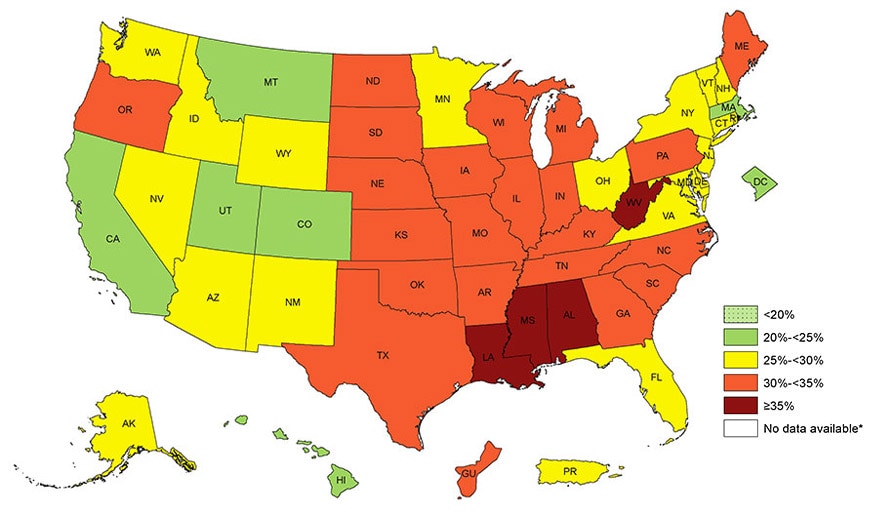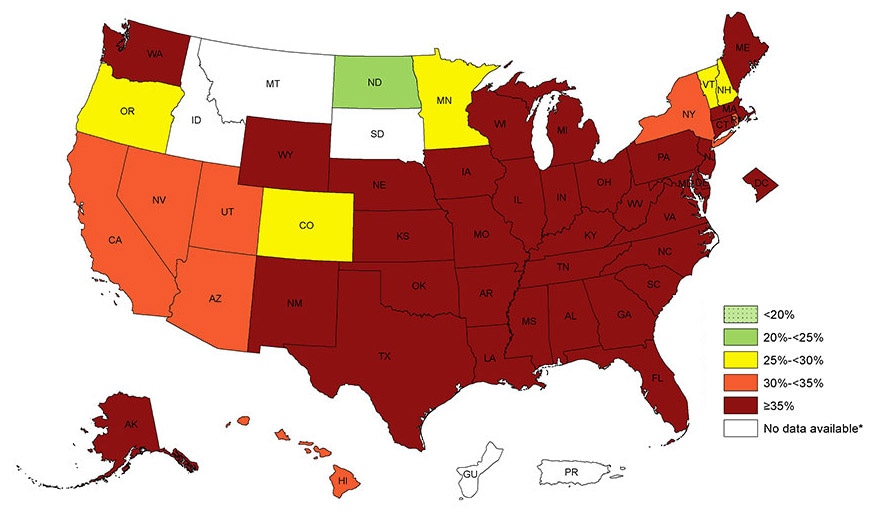Obesity is a huge problem in the United States. The Office of Minority Heath (OMH) provided these facts about Black Americans and Obesity1 .
- African-American women have the highest rates of being overweight or obese compared to other groups in the U.S. About four out of five African-American women are overweight or obese.
- In 2014, African Americans were 1.5 times as likely to be obese as Non- Hispanic Whites.
- In 2014, African American women were twice as likely to be obese than Non-Hispanic White women.
- In 2011-2014, African American girls were 50% more likely to be overweight than Non-Hispanic White girls.
Jay Harold wants you to have the latest stats from the Centers for Disease Control and Prevention (CDC) on this important health topic.
Obesity Prevalence in 2015 Varies Across States and Territories
- No state had a prevalence of obesity less than 20%.
- In 6 states (California, Colorado, Hawaii, Massachusetts, Montana, and Utah) and the District of Columbia, obesity ranged from 20% to less than 25%.
- 19 states and Puerto Rico had a prevalence of obesity between 25% and less than 30%.
- Obesity prevalence in 21 states and Guam was 30% to less than 35%.
- Four states (Alabama, Louisiana, Mississippi, and West Virginia) had an obesity prevalence of 35% or greater.
- The South had the highest prevalence of obesity (31.2%), followed by the Midwest (30.7%), the Northeast (26.4%), and the West (25.2%).
Prevalence of Self-Reported Obesity Among U.S. Adults by State and Territory, BRFSS, 2015
¶Prevalence estimates reflect BRFSS methodological changes started in 2011. These estimates should not be compared to prevalence estimates before 2011.

Source: Behavioral Risk Factor Surveillance System
*Sample size <50 or the relative standard error (dividing the standard error by the prevalence) ≥ 30%
Prevalence of Self –Reported Obesity Among U.S. Adults by Race/Ethnicity, State and Territory, BRFSS, 2013-2015
Combining data from 2013 through 2015, non-Hispanic blacks had the highest prevalence of self-reported obesity (38.1%), followed by Hispanics (31.9%) and non-Hispanic whites (27.6%).





